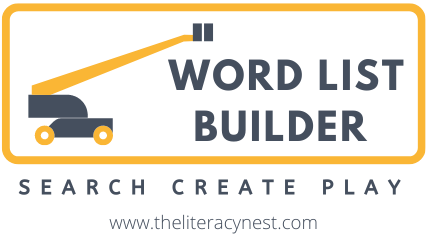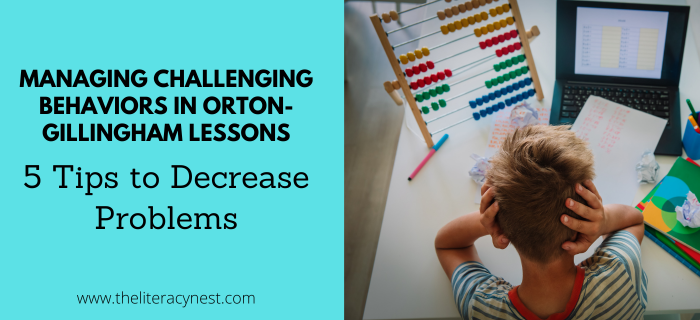Tips for b and d Reversals
Letter reversals are very common for early readers and writers. This is particularly true for b and d reversals. Letters are one of the very first times students have encountered something that changes its identity based on its orientation in space. A chair is a chair regardless of if it is right side up or upside down, frontward or backward. But letters have an identity that is not just based on the components of the letter like sticks and balls or curves and slants, but on the direction of that formation.

For the typically developing reader, these may persist until the age of 7 or 8, but for students with dyslexia, these letter reversals tend to last much longer and remain a bit of a bugaboo. I have even had students who graduated from tutoring, catch themselves with a b/d reversal when they were tired. So, while we are unlikely to eliminate any chance of these errors, we can give students the tools to spot and correct them independently.
One caution is that although there are a lot of strategies for helping students with this problem, presenting too many options can be more confusing. The key is picking a couple of tried-and-true strategies that resonate for a particular child, that they are comfortable using when needed, and insisting that students use those strategies consistently. This deliberate targeted strategy is better than a scattershot approach. Not all students will respond to the same visual, but once something makes sense for a child, stick with it. Be consistent and persistent. Make students check every time they write a b or d as part of their editing until it becomes automatic.
Here are 7 Tips for Helping Students with b and d Reversals
1. Using Visuals
Using visuals can be very helpful for students. These can be displayed on posters or personal reference materials in the classroom.
Some popular helpful visuals include:
- B is a bat and ball, d is a doorknob and door. This visual encourages students to look at the orientation of the letter components in left to right sequence and eventually visualize these images when working with letter forms.
- Making a b and d with the fingers is a helpful visual aid because it travels with the child. They don’t need to have access to a particular poster or image to use this tool.

- Similarly, using thumbs up to make a b and d has the advantage of being able to be used anywhere. This method can be very discreet which is particularly helpful for students who are self-conscious about using strategies in the regular classroom.
- For many students using the thumbs up with their non-dominant hand becomes a very automatic method. For a right-handed student, their left hand becomes their b hand. They make a thumbs up and compare the letter in their reading to writing to that hand. If it is the same, it is b, if it isn’t, it’s d. For a left-handed student, this works the same except they use their d hand. One advantage of this method is that the student doesn’t need to put down their pencil or book. This makes one less barrier to using the strategy.
- The image of the bed similarly encourages students to refer to a poster or image and eventually to build an internal visualization to use.
- Having color-coded slap bracelets with b and d written on them is a great tool for students who want to become used to checking b and d for themselves. The visual reminder helps encourage them to use the tool without explicit repeated prompting.

- If you are lucky enough to have a student with a b or d in their name, often they consistently write the letter in their name correctly. They overlearned this important word to the point of automaticity. This allows them to use it as a reference. Since their name goes on the top of most papers, they can discreetly check the letter in their name against the letter they are reading or writing.
2. Concentrate on letter formation.
Use a consistent verbal pathway for letter formation such as “bat before ball” or “c before d”. Use the same verbal pathway every time. Model it and repeat it often, but students should also say it repeatedly while tracing or skywriting. Supporting the consistent verbal pathway with a visual with number indications for letter formation can be very helpful. These quick and memorable verbal pathways while tracing should be repeated 3 times.

These can be practiced in a variety of ways with sandpaper cards or a variety of tactile surfaces.
3. Think about mouth formation
Another means of differentiating b and d is thinking about our mouth formations. The B sound begins with lips together in a line. When lips are in a line, you start by writing the line. The D sound begins with the lips open. When writing a d, you start by writing the open part of the letter. You can use a hand mirror for students to see what their mouth is doing. This might be particularly helpful for older students who may be more reticent to use visuals.
4. Spend time on handwriting
Learning proper letter formation and practicing with visual cues such as green for the starting place and red for where to stop. Handwriting practice crosses over into many areas. Special paper with sky, grass, or dirt lines may also be helpful. These scaffolds will gradually be removed. Combine this practice with stressing verbal pathways.
Learn more about Bringing Handwriting Into Our Literacy Instruction! Listen to season two, episode twelve of the Together in Literacy podcast.
5. Fast drills
Incorporating quick rapid letter identification as a warm-up activity is another great way to practice, particularly as they become more consistent. You can make it into a Bingo game and incorporate all of a student’s reversals.
Read 5 Creative Orton-Gillingham Lesson Warm-Up Ideas! for more tips!
6. Teach cursive
Because the formation of cursive b and d are so different, this is a great way to help students be more consistent with writing these letters correctly.
Looking for support in teaching your students cursive? Check out my Handwriting Paper and Cursive Introduction and Practice!
7. Use books
Download and print this book list!
Some books specifically address these tricky letters. These can be great as part of a classroom lesson or for students to read at home with parents.
- Brother B and Sister D (When Letters Come to Life) by Michael A. Johnson – This story is not only an entertaining tale about a brother and sister learning to value and respect one another, but an interactive chance for students to practice tricky letter reversals.

- Manu and the Mystery of the Lowercase b: b and d Letter Reversals by Inti F. Cavour – This story is about a little girl overcoming fear and confusion to learn her letters were written by a parent after her experiences helping her daughter during Covid lockdown.

- B and D are Buddies by Brenda Olsen – B and D are looking for a friend. Although they meet many letters, it isn’t until they meet each other that they’ve found a true friend.

- Which Is It? B or D by Marie Meyer – In this story a boy named David does not like school. He struggles with telling b and d apart, but luckily his family and some new friends find a way to help him.
Are you looking for a list of words to use in your Orton-Gillingham lessons? Word List Builder has got you covered!
Save time searching for words to use in your lessons! Create customized and meaningful review, build your folder of words, create templates and games, and much more in Word List Builder.






